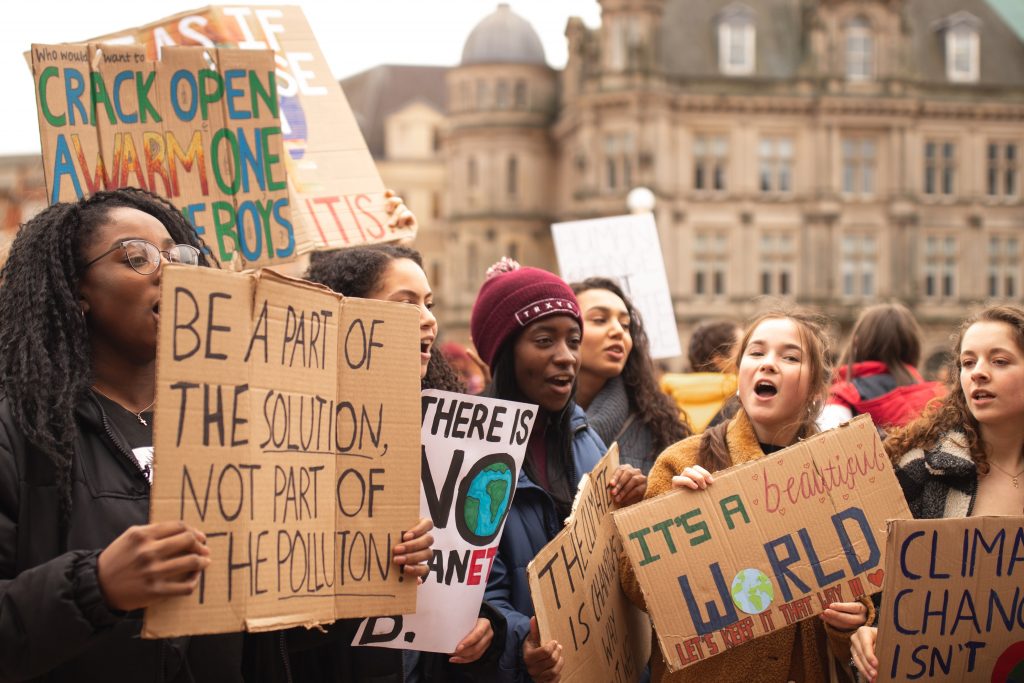
10 Steps to Make your Business Greener
By Dilyara Salakhova
Climate change is happening now – temperatures are rising, and natural disasters such as floods and wildfires are becoming more frequent, causing havoc and devastation around the world. But as a humanity, we do not have to sit and wait whilst our life is in threat.
Climate change is not only a threat, it is also an opportunity. It is an opportunity for society and the current generations to reconsider their values, take responsibility, draw a new vision of how our life should look, and start acting. It has the potential to create a powerful moment of empowerment: from citizens, customers, and businesses who have no choice but to follow, we can transform and become leaders of change.
Lead the change…
We are already witnessing the passion for this change – more and more people, particularly the younger generation, are taking action. Consumers have started changing their everyday habits and preferences. They choose products, companies, and investments that respond to their values of sustainability and social responsibility. Businesses have three options: to lead, to adjust, and to vanish. Let’s have a closer look at the three.
The first option is to lead the change – a hallmark of entrepreneurs is creativity. They find solutions to people’s problems. And they can go one step further and suggest products or solutions that we have not even dreamed of, thus they create the demand for new products. This energy and creativity can be used to lead the change and create new sustainable products and offer innovative ideas.
The second option is to adjust – as customers’ preferences change, to keep customers and clients, all businesses must adjust. Because if they do not and continue operating as usual, they have no option but to vanish one day.

What can entrepreneurs and small companies do to make their businesses green? There are countless options! Here are 10 steps to make your business greener:
Step 1
Make your products as sustainable as possible by using sustainable materials and technology that reduces greenhouse gas emissions during the production process.
Step 2
Use green energy for business processes. Energy use in industry is responsible for about a quarter of all greenhouse gas emissions.
Step 3
Carefully choose your suppliers – ask not only about prices but also their sustainable practices. Build relationships with your suppliers and encourage them to green their processes too. For example, choose servers or providers of IT services that use green energy to power their servers and platforms.
Step 4
Carefully plan your travelling – transportation is responsible for about 16% of emissions. Use a waterfall approach: whenever possible, replace travelling with virtual meetings, choose the train over a plane, aim to bundle issues to solve more of them in one trip, avoid or reduce using business class. Favour electric cars when possible.
Step 5
Do it yourself and promote green commuting among colleagues and employees – walking, biking, public transportation, and electric cars.

Step 6
Reduce printing papers, replace paper bills and tickets with electronic ones, and unsubscribe from paper mail and advertisement as much as possible.
Step 7
Install tap filters or water coolers to reduce the use of plastic bottles in the office. Offer a multi-use flask as a welcome gift to reduce the purchase of plastic bottles when commuting and travelling.
Step 8
Sort waste. Waste alone contributes 3.2% to emissions, and only a small percentage of the waste is currently recycled, most of it goes to landfills. Worm compost bins are a nice solution for organic waste. It transforms the waste into natural fertilisers that can be used to grow plants inside or outside of the office building.
Step 9
Organise team buildings around environmental topics. “Adopt-a-highway” type of activity can be a nice way of contributing to the environmental goals. The idea was originally born in the US in the 80s. Volunteering organisations were responsible for keeping a piece of highway clean of litter and were allowed to have its name posted on a sign in the section of the highways they maintained. Other possibilities include a contribution to protecting a piece of forest or an endangered species.
Step 10
Reduce packaging in your business – use less packaging in your own products, or, if necessary, use sustainable materials for packaging.
Depending on the type of business, you can do even more, but these are ten simple steps to start your green business journey. And go the extra mile and educate your customers, and explain what your values are and how they are incorporated into your business.
Acting is the easiest way to feel empowered.
Dilyara Salakhova

Senior Financial Stability Expert at the European Central Bank (Frankfurt), Dilyara Salakhova specialises in sustainable finance, climate-related risks and financial sector interconnections. She is the founder of the podcast Sustain Change & Grow, a platform to raise awareness of environmental issues and sustainability in business and life.





